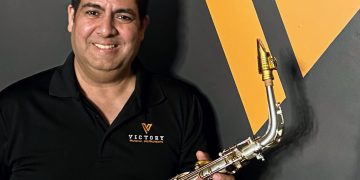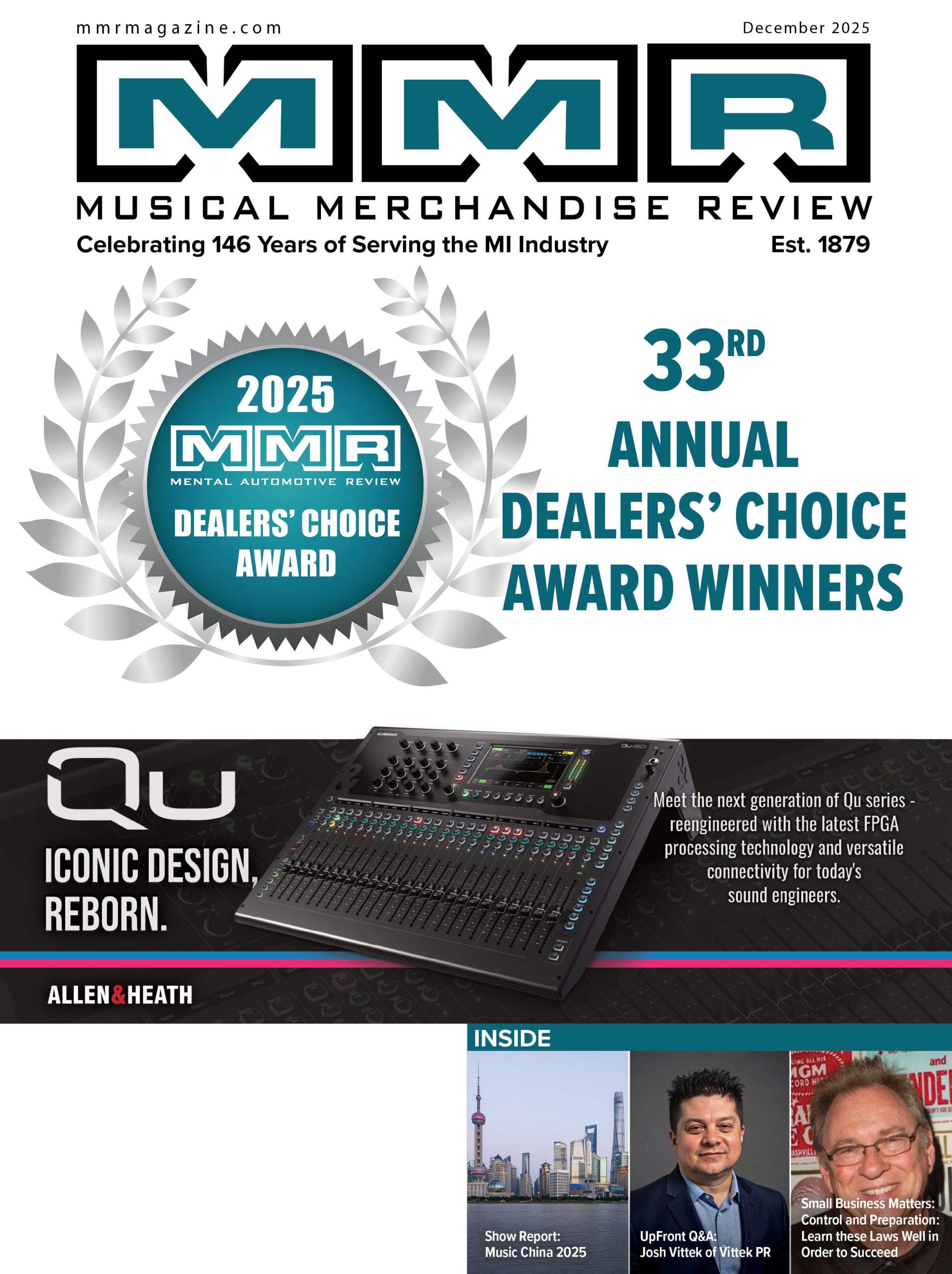 Approaching another big Summer NAMM Show this month in Nashville, this spring seemed like the perfect opportunity to check in with one of the industry’s most recognizable companies – Ernie Ball. The California-based organization, now in its 52nd year in operation, has stayed ahead of the game through years of innovation and adaptation. We spoke with Ernie Ball VP Brian Ball about the changing state of the guitar industry, the resilience of the accessories market, and the importance of never rushing development on what could end up being a groundbreaking product.
Approaching another big Summer NAMM Show this month in Nashville, this spring seemed like the perfect opportunity to check in with one of the industry’s most recognizable companies – Ernie Ball. The California-based organization, now in its 52nd year in operation, has stayed ahead of the game through years of innovation and adaptation. We spoke with Ernie Ball VP Brian Ball about the changing state of the guitar industry, the resilience of the accessories market, and the importance of never rushing development on what could end up being a groundbreaking product.
MMR: As always, the MI landscape has continued to change in recent years, shifting along with the economy (leaner approaches from almost everyone) and the evolving pop music culture (less focus than ever on guitar heroes). How has Ernie Ball’s place changed in that industry?
Brian Ball: There’s no question popular music is almost guitar-free to a certain point if you refer to radio and iTunes charts. But, I don’t think guitar music is dead – people are just buying less music. The Apple acquisition of Beats Electronics is 100 percent a streaming play and talent acquisition with Jimmy Iovine. Apple knows that digital music sales are down substantially, and streaming services provide such a significantly cheaper and better discovery model that we’re going to see this more and more in years ahead.
From Ernie Ball’s standpoint, we really haven’t changed the way we’ve approached selling or marketing our products. Personally, I think we have a really great collection of bands that play guitar and I believe they influence guitarists the same way shredders did in the ‘80s, just differently. Great examples are Dave Grohl, Jack White, Black Keys, Kings of Leon. Then you have great acoustic players that play music that’s attainable to learn like Jason Mraz and Jack Johnson. Then we also have this really popular cult-like “djent” metal base with guys like Periphery, Born of Osiris, and Animals as Leaders. These artists are all influential in their own right.
What is your assessment of the guitar market this year?
I think the guitar market is at a really exciting time, but extremely competitive. Acoustics continue to be on fire, while electrics have been flat or down a little. One of the things I think we’ll see is more interesting body designs, and more innovation on the pickup side of things. Fishman’s new pickups, our Game Changer system, and Fender’s personal tone cards are good examples of that. 3D printing may also pave the way for some more unique designs with materials and shapes.
What has Ernie Ball been working on developing for the string and accessory market?
We’ve gotten a couple patents on string products recently – our Cobalt Slinky line and the M-Steel (“Maraging Steel Core”) line. Additionally, we recently came out with Aluminum Bronze Acoustic Strings, which give acoustic players more projection and clarity than traditional bronze strings.
Are there market indicators you’re looking for when deciding when to aggressively go after patents and new technologies?
It’s really not a timing thing. It’s a constant pursuit of innovation. We’ve got some pretty smart competitors out there and if we’re not aggressive and working hard to develop new products, then someone else will be. So it’s a huge priority, not just personally for Sterling [Ball, president and CEO] and myself, but for the whole company.
I’ve learned that when you develop and design products based on a schedule, that’s when you’re going to be met with some adversity and potential failure. First and foremost, you have to make the product great. You can only market an average product so well. You’ve got to really develop and fine tune a product line. When it’s finished and you know it’s ready for market and you’ve gone through all the product development steps, then you know you’re ready. But if you think, “We’ve got to come out with something this year at NAMM…” that’s the quickest way to set yourself up to stub your toe.
How much does customer and retailer feedback factor into your research?
We definitely value input from our retailer partners. We want to know what’s working for them, what’s not, how we can help, and how we can continue making a profitable relationship with each other. We could sit around and pat ourselves on the back all day, but what really matters is what value are we providing the consumers and artists. What needs are and aren’t being met, and how can we best fill those gaps?
Do you get involved very much with how retailers are merchandising your product?
Merchandising is a big component of getting your message out. Obviously, there are print ads, social media, PR, and other vehicles you can do directly, but at the point of sale, it’s really important to get some visual merchandising going. If you walk into a music store, especially on the accessories side, it’s pretty cluttered. Strings, straps, picks, cables, et cetera. Doing countertop displays and banners are things that we generally focus on.
Given how the market has been, dealers have had to lean more heavily on accessory items. Has that strengthened Ernie Ball’s relationship with retailers?
Without a doubt. It’s twofold – one, I don’t think people are playing less guitar. If anything, there are more and more macro drivers like YouTube nowadays that are really pushing people to play. The small accessory goods have been a great business for retailers and manufacturers. I also think that the retailers enjoy how much emphasis we place on the new product and the profit margins they come with, in addition to the promotions that we do. I’m really excited at how well the new string lines have been received by retailers, and am glad we’ve been able to push the market forward with new product offerings.



























